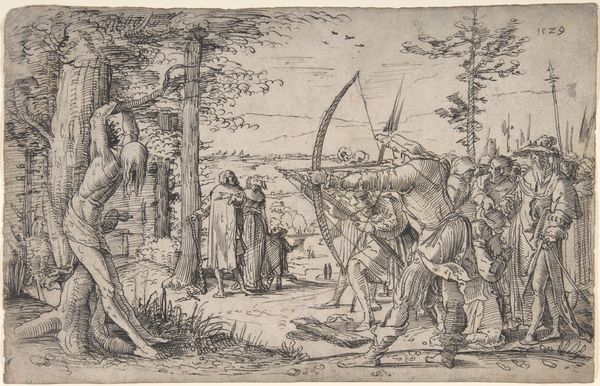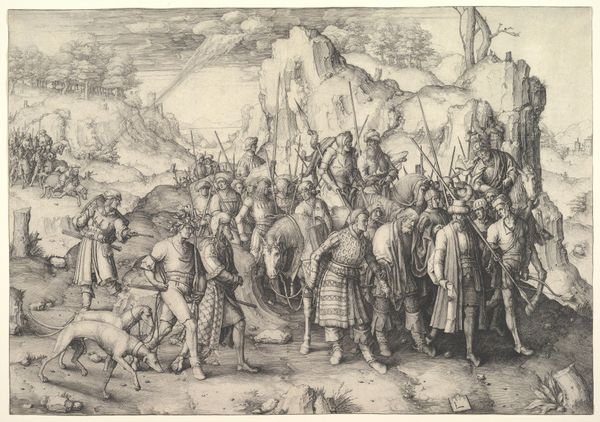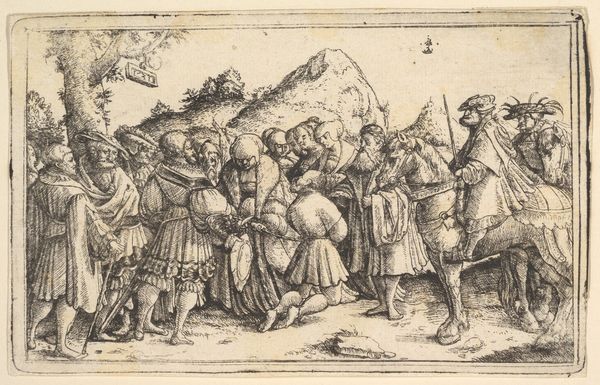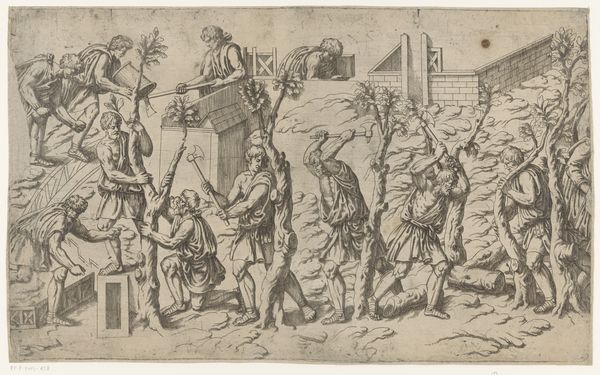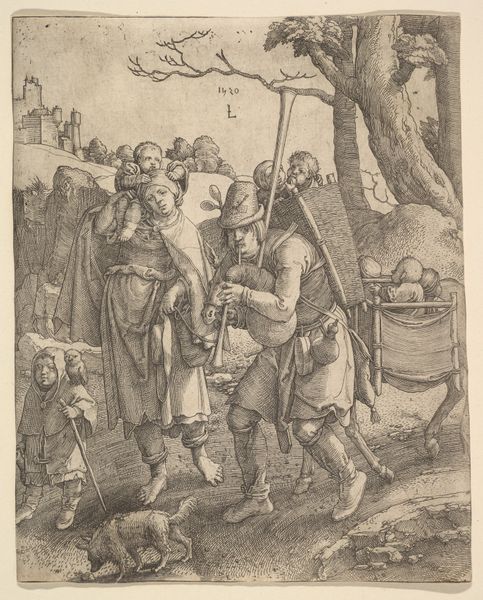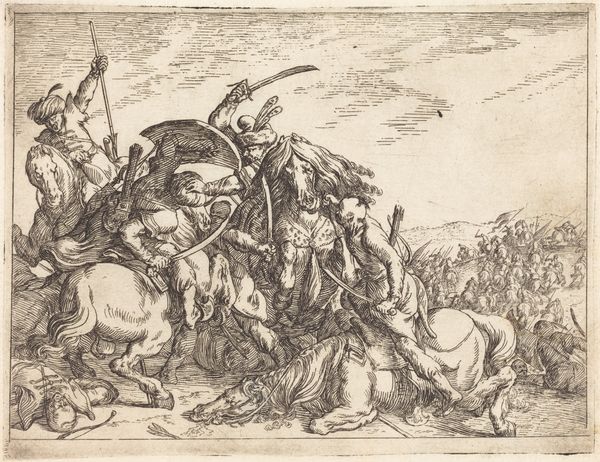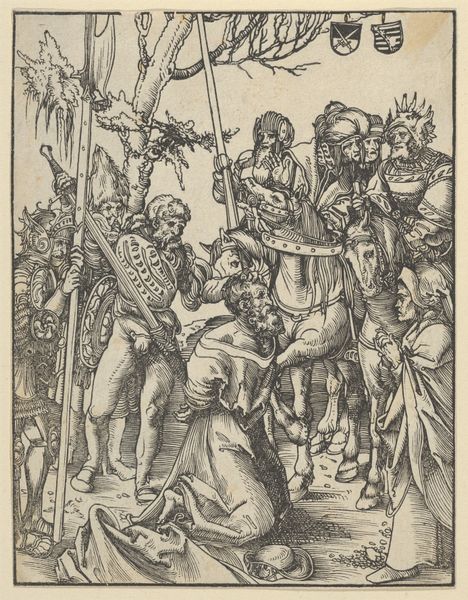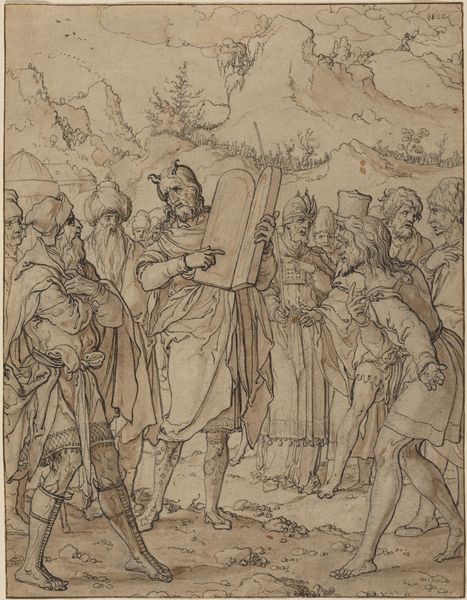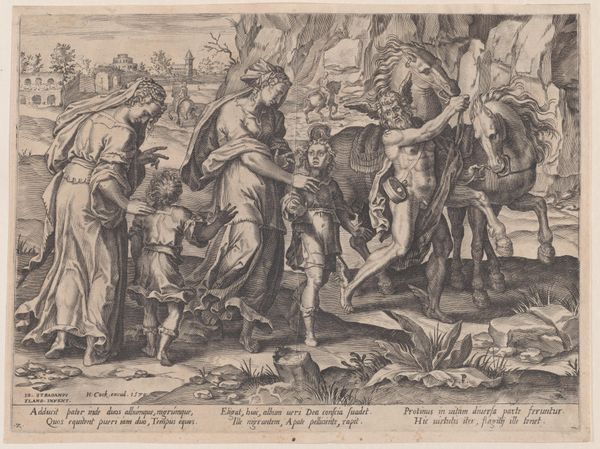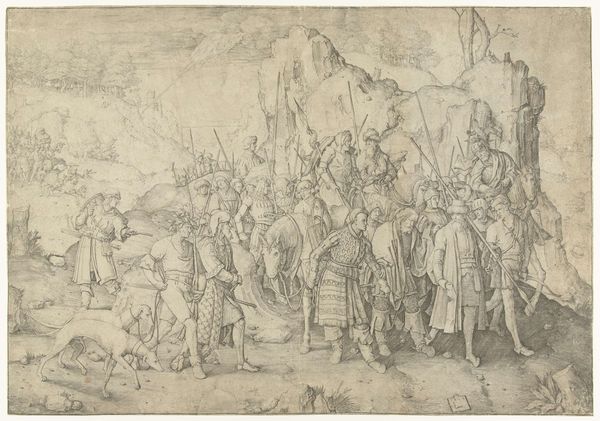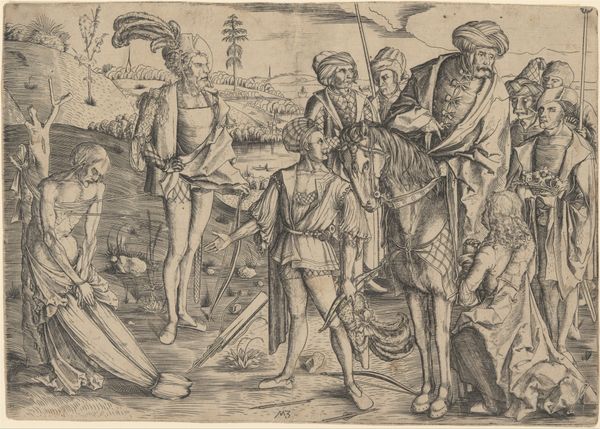
drawing, print, engraving
#
drawing
# print
#
figuration
#
line
#
history-painting
#
northern-renaissance
#
engraving
Dimensions: 4 3/16 x 3 in. (10.64 x 7.62 cm) (image)19 3/4 × 15 3/4 × 1 1/8 in. (50.17 × 40.01 × 2.86 cm) (outer frame)
Copyright: Public Domain
Editor: So this is Dürer’s “Five Foot Soldiers and a Mounted Turk,” made around 1496. It's an engraving, and I'm immediately struck by the detail and texture he achieves. The clothing and musculature of the figures feel incredibly lifelike. I'm curious, given your expertise, what draws your attention in this piece? Curator: As a historian, I see this engraving as a fascinating document of its time. It reflects the cultural anxieties surrounding the Ottoman Empire's expansion into Europe during the late 15th century. Editor: Anxieties? Curator: Absolutely. Consider the prominent figure of the "Turk." He's not presented as some barbarian, but as a figure of authority, mounted on a horse, hinting at military might. Dürer’s work participates in a broader visual discourse – how were Muslims and particularly the Ottoman Empire represented and perceived in Early Modern Europe? Editor: That's interesting. So the print functions beyond just an artistic representation; it becomes a kind of propaganda, or at least a visual expression of the political climate? Curator: Precisely. And the five foot soldiers themselves are also intriguing. They’re a diverse group, seemingly a mix of mercenaries or even landsknecht. Dürer meticulously renders their garments, highlighting their status and possibly wealth. Who exactly were intended to be the audiences for this image? What would they have thought of it? Editor: That really shifts how I see the artwork. I was focused on the art historical aspect, the artistic mastery in conveying different fabric textures, but not about the piece as an historical and political commentary. Thank you! Curator: It works on both levels, doesn't it? Considering its cultural and historical role alongside Dürer's artistry is what makes art history so compelling. We bring our own context to bear, but by understanding its past, we enrich the present moment as well.
Comments
minneapolisinstituteofart almost 2 years ago
⋮
At this time Turks claimed a large share of public attention, owing to the rappid westward advance of the Ottoman empire through conquest. Durer shows these family members as semi-savages: a partially nude and bare-foot woman, holding a baby, follows the father, a robust warrior. This unsympathetic portrayal probably reflected contemporary opinion in the Christian north.
Join the conversation
Join millions of artists and users on Artera today and experience the ultimate creative platform.
